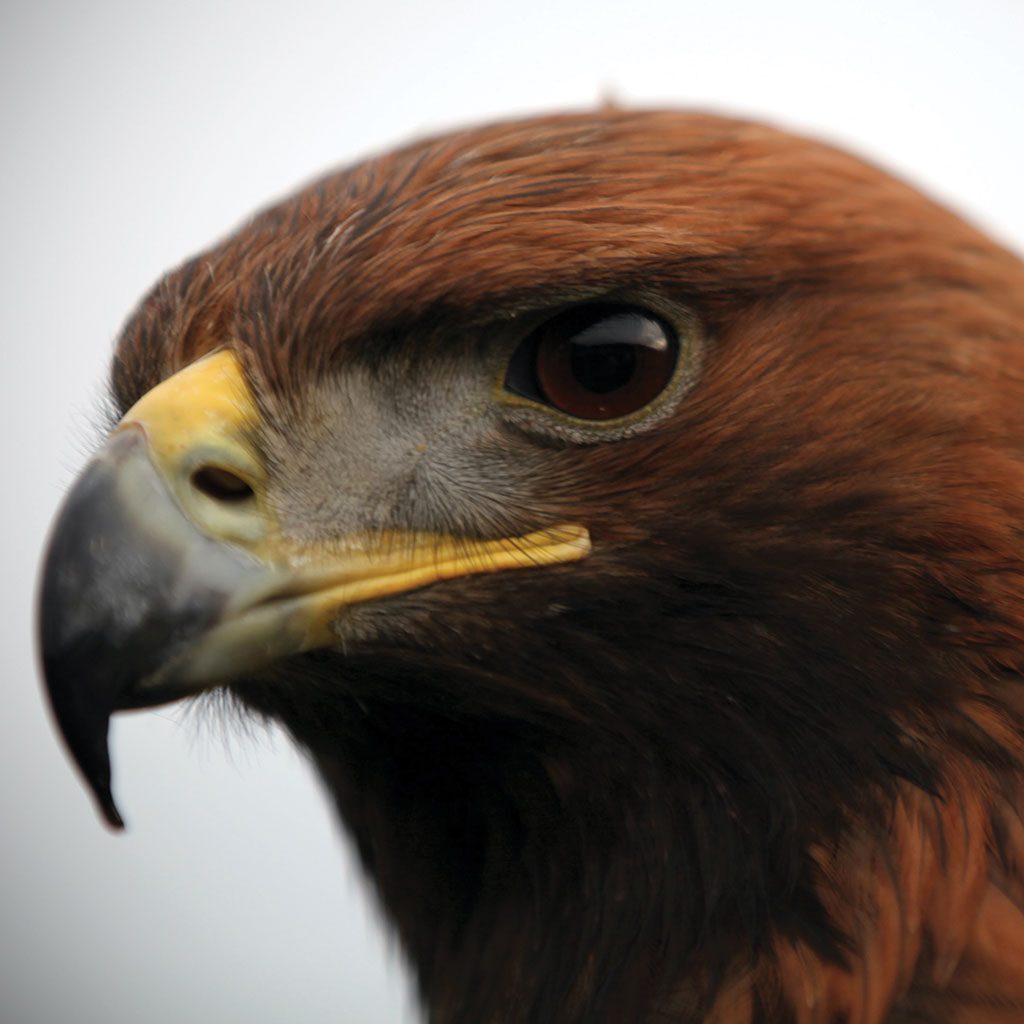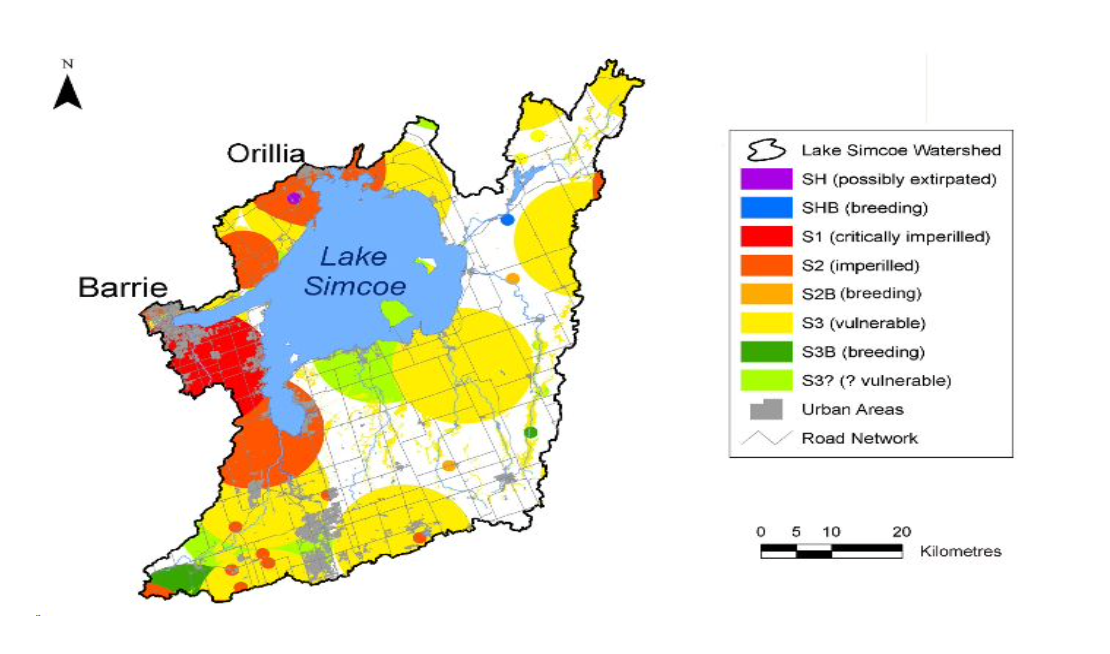Comments on the
Species at Risk Conservation Fund
With the Species at Risk Conservation Fund and broader changes to the ESA, the future of these species is very grim.
This letter was submitted to the Environment Registry of Ontario in response to posting ERO 019-2636, which proposes use of a “Species At Risk Conservation Fund.”
Simcoe County’s Context as a Home to Species-At-Risk
At 4,841 square kilometres, Simcoe County is one of the largest regions in the Greater Golden Horseshoe.
Its vast interconnected water system includes provincially and internationally important water resources: Wasaga Beach, Minesing Wetlands, Matchedash Bay and Wye Marsh.
Geologically diverse, Simcoe is home to over 1500 species of vascular plants, 150 species of nesting birds, 50 mammals and 33 types of reptiles and amphibians1Simcoe County Official Plan (2008). Available at: www.simcoe.ca/planning. It offers specialized vegetation communities adapted to unique habitats such as coastal plains, prairies and savannas, alvars, bogs and fens, the Great Lakes shoreline and the Niagara Escarpment.
In addition, the county contains provincially significant wetlands, provincially significant Areas of Natural and Scientific Interest and more than 60 species of plants and animals deemed vulnerable, threatened or endangered in Ontario and/or Canada.2Simcoe County Official Plan (2008). Available at: www.simcoe.ca/planning
Extensive tracts of undisturbed forest in the north and east are habitats for forest-dwelling birds and mammals.
All these features combine to provide a healthy habitat for Simcoe County residents, flora and fauna.

Our concern is how these sensitive habitats will be treated in future under the potential changes.
In broad strokes, we are strongly opposed to the Species at Risk Conservation Fund for the following reasons:
The loss of biodiversity has been shown to put climate action and public health at risk. This fund normalizes and establishes a process to continue biodiversity loss without any opposing policies that stop the losses overall;
Funds aren’t required to be applied to affected watersheds, municipalities or Indigenous traditional territories where the harm occurs;
Provides a perverse incentive to destroy sensitive habitats;
Payment into the fund is an alternative to “overall benefit” approach that the Endangered Species Act was intended to uphold;
The funding charge fails to fully calculate the risk and liabilities that arise with the removal of sensitive habitats;
No long term government financial commitment that assures conservation efforts will continue outside of pay to slay fees. Will this require MECP to allow more permitting and fee collection to keep this fund financially independent as the Ministry anticipates? If the fund is not financially independent as hoped, will funds be diverted from other conservation programs accordingly?
Lack of transparency with the public regarding the success indicators of this program including species-specific or cumulative impacts of activities undertaken by proponents. These indicators should be measured and included in public reports.
New Changes Put in Context of Species at Risk in Simcoe County/Lake Simcoe Watershed
As noted in Figure 1, there are several species at risk in one of our watersheds and they are most at risk within Simcoe County communities. The new changes proposed could pose significant threats to Simcoe County’s most vulnerable species and sensitive habitats.

In 2012, MNRF looked at the Lake Simcoe Watershed to assess the vulnerability of species at risk within the Lake Simcoe watershed in light of climate change. Out of the 62 species at risk known in the watershed, 17 were identified as most at risk and therefore high priority for study. As easily seen in Figure 1, these species were most imperilled (red/orange/yellow) in Barrie, Oro-Medonte, Orillia, Innisfil and Bradford West Gwillimbury.
Further, the vulnerability assessment found that two species at risk were going to face devastating futures factoring in climate change – the Redside Dace and the Jefferson salamander. Assessments concluded that in both cases, the current habitat, which is currently under threat, is the only one left that is suitable for them in the entire watershed.

Although from two different ecosystems, what these species tell us is all we need to know about how effective current ESA regulations are at protecting species and their habitat.
Urban development is the most significant threat to both of these species as clearly outlined in their recovery strategies.
The Redside Dace requires clean water with forest cover while the Jefferson Salamander requires connected habitat which includes well-functioning wetlands and clean water systems.
However, their habitats continue to be affected by urbanization despite coherent recovery strategies. That we are not only threatening their “officially recognized habitat”, but also degrading adjacent habitats so they have no other habitat options is a scathing assessment of what we are doing to our landscapes and watersheds.
In Conclusion
With the Species at Risk Conservation Fund and broader changes to the ESA, the future of these species is very grim.
We support the submission of Ontario Nature and, like Ontario Nature, stand strongly opposed to the government implementing the Species at Risk Conservation Fund.
Instead, the government should be implementing policy that puts public health first and foremost. This would include stronger protection of sensitive habitats, measures to increase and strengthen biodiversity, preserving places that are known carbon sinks, flooding regulators and climate change mitigators (wetlands, forests).
Unfortunately, these proposals move us further away from forward thinking conservation action that has been the backbone of Ontario’s policy structure for decades.
Additional Resources
Subscribe to Our Newsletter
We send out a once-monthly newsletter full of information on what’s happening in Simcoe County and beyond, including information on how you can take action to protect the health of your community.


